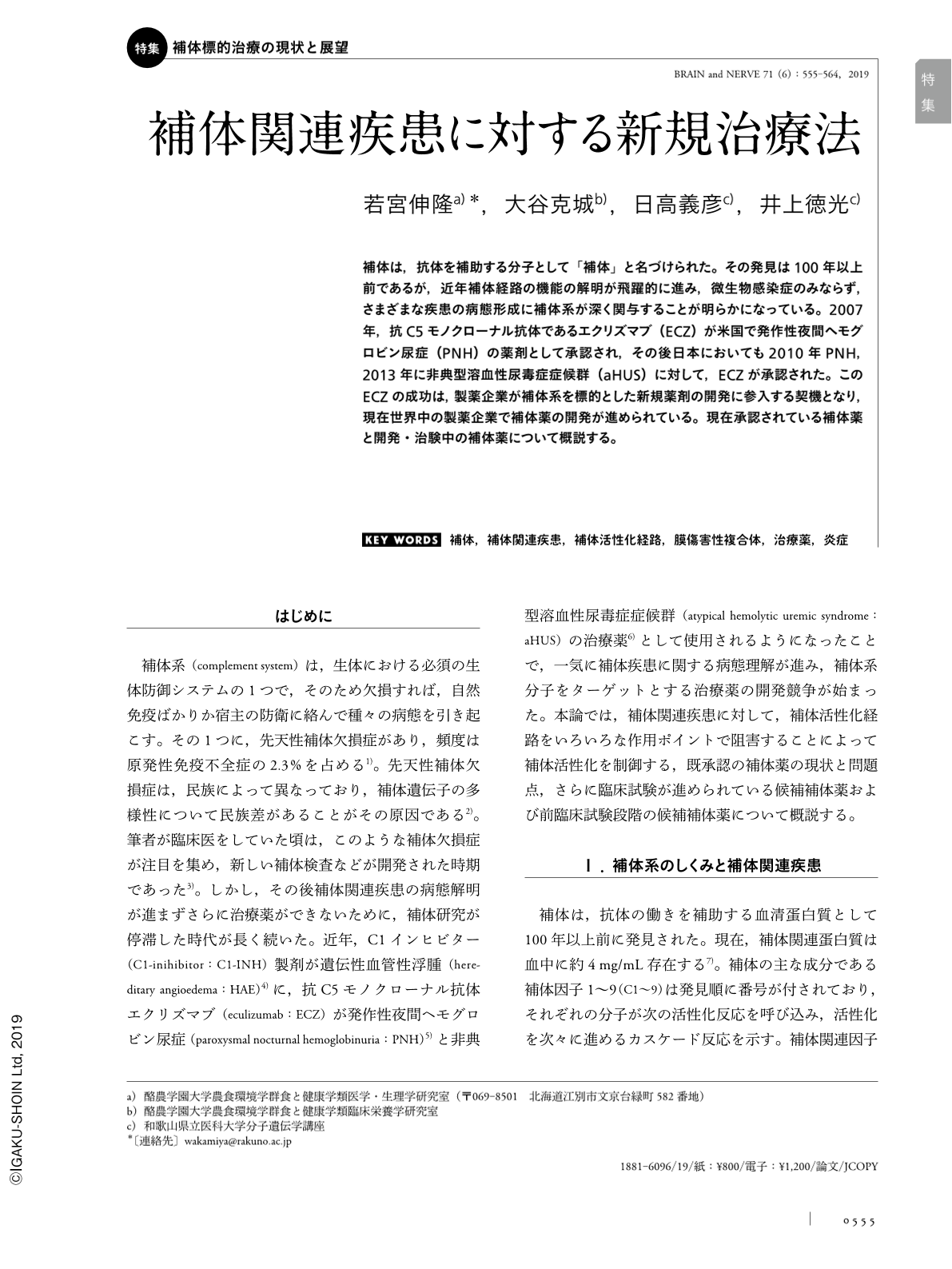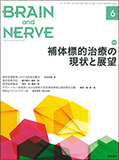Japanese
English
- 有料閲覧
- Abstract 文献概要
- 1ページ目 Look Inside
- 参考文献 Reference
補体は,抗体を補助する分子として「補体」と名づけられた。その発見は100年以上前であるが,近年補体経路の機能の解明が飛躍的に進み,微生物感染症のみならず,さまざまな疾患の病態形成に補体系が深く関与することが明らかになっている。2007年,抗C5モノクローナル抗体であるエクリズマブ(ECZ)が米国で発作性夜間ヘモグロビン尿症(PNH)の薬剤として承認され,その後日本においても2010年PNH,2013年に非典型溶血性尿毒症症候群(aHUS)に対して,ECZが承認された。このECZの成功は,製薬企業が補体系を標的とした新規薬剤の開発に参入する契機となり,現在世界中の製薬企業で補体薬の開発が進められている。現在承認されている補体薬と開発・治験中の補体薬について概説する。
Abstract
The complement was named after “a complement”, a protein molecule that supports an antibody. It was considered previously that the complement mainly participates in protecting against microbial infections. But later, as research on biological functions in complement activation advanced drastically, it was elucidated that the complement could be involved in the onset of various diseases. In 2007, eculizumab (ECZ), an anti-C5 (complement factor 5) monoclonal antibody, was approved as a drug for paroxysmal nocturnal hemoglobinuria (PNH) in the United States. In Japan, ECZ was approved for PNH and atypical hemolytic uremic syndrome (aHUS) in 2010 and 2013, respectively. The success of ECZ created an opportunity for drug companies to develop new therapeutics targeting the complement system; development of complement therapeutics is now a major venture of pharmaceutical companies worldwide. Here, I will provide an outline of the approved complement therapeutics and those that are in development and clinical trial phase currently.

Copyright © 2019, Igaku-Shoin Ltd. All rights reserved.


